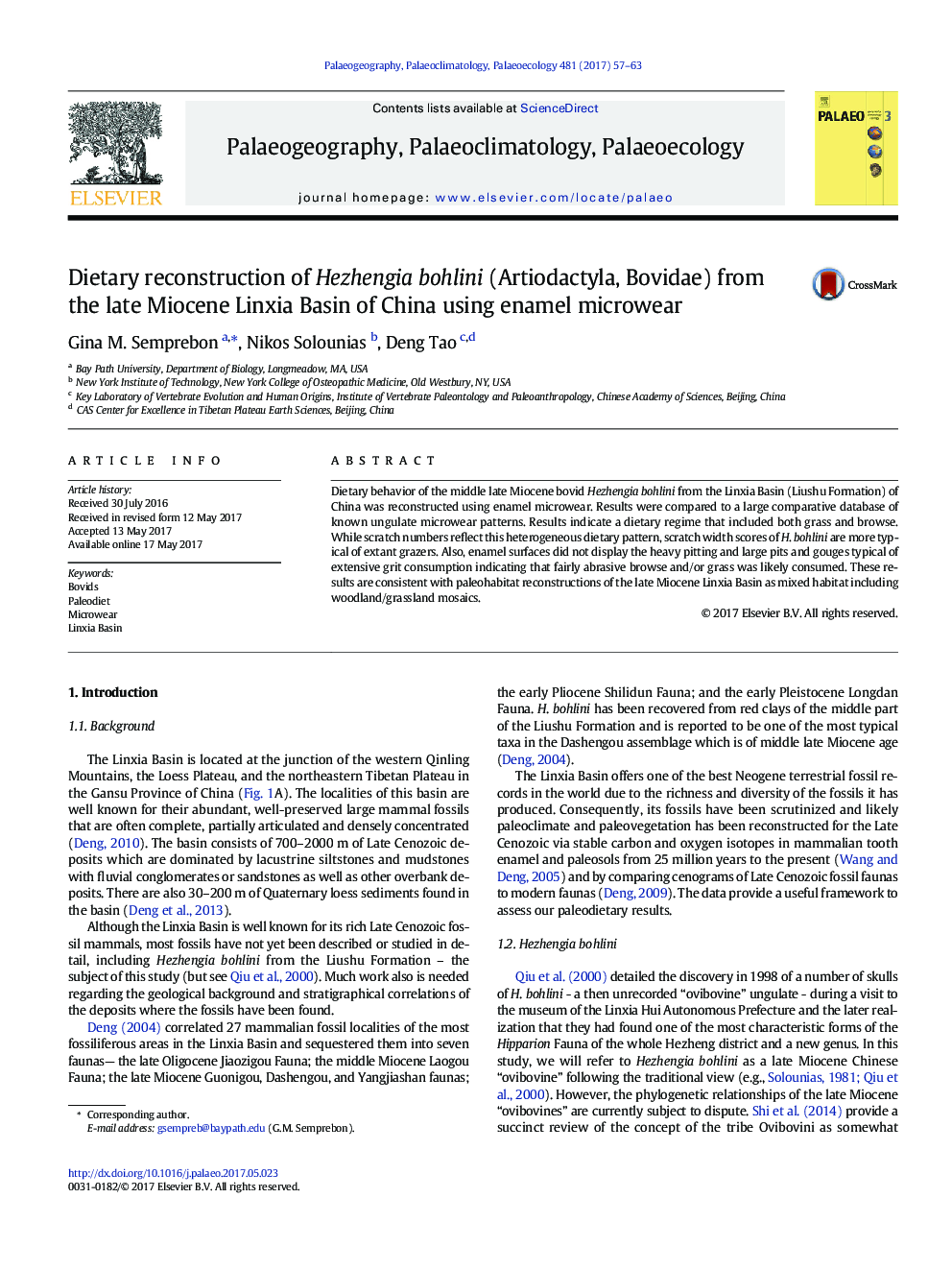| Article ID | Journal | Published Year | Pages | File Type |
|---|---|---|---|---|
| 5755833 | Palaeogeography, Palaeoclimatology, Palaeoecology | 2017 | 7 Pages |
Abstract
Dietary behavior of the middle late Miocene bovid Hezhengia bohlini from the Linxia Basin (Liushu Formation) of China was reconstructed using enamel microwear. Results were compared to a large comparative database of known ungulate microwear patterns. Results indicate a dietary regime that included both grass and browse. While scratch numbers reflect this heterogeneous dietary pattern, scratch width scores of H. bohlini are more typical of extant grazers. Also, enamel surfaces did not display the heavy pitting and large pits and gouges typical of extensive grit consumption indicating that fairly abrasive browse and/or grass was likely consumed. These results are consistent with paleohabitat reconstructions of the late Miocene Linxia Basin as mixed habitat including woodland/grassland mosaics.
Keywords
Related Topics
Physical Sciences and Engineering
Earth and Planetary Sciences
Earth-Surface Processes
Authors
Gina M. Semprebon, Nikos Solounias, Deng Tao,
